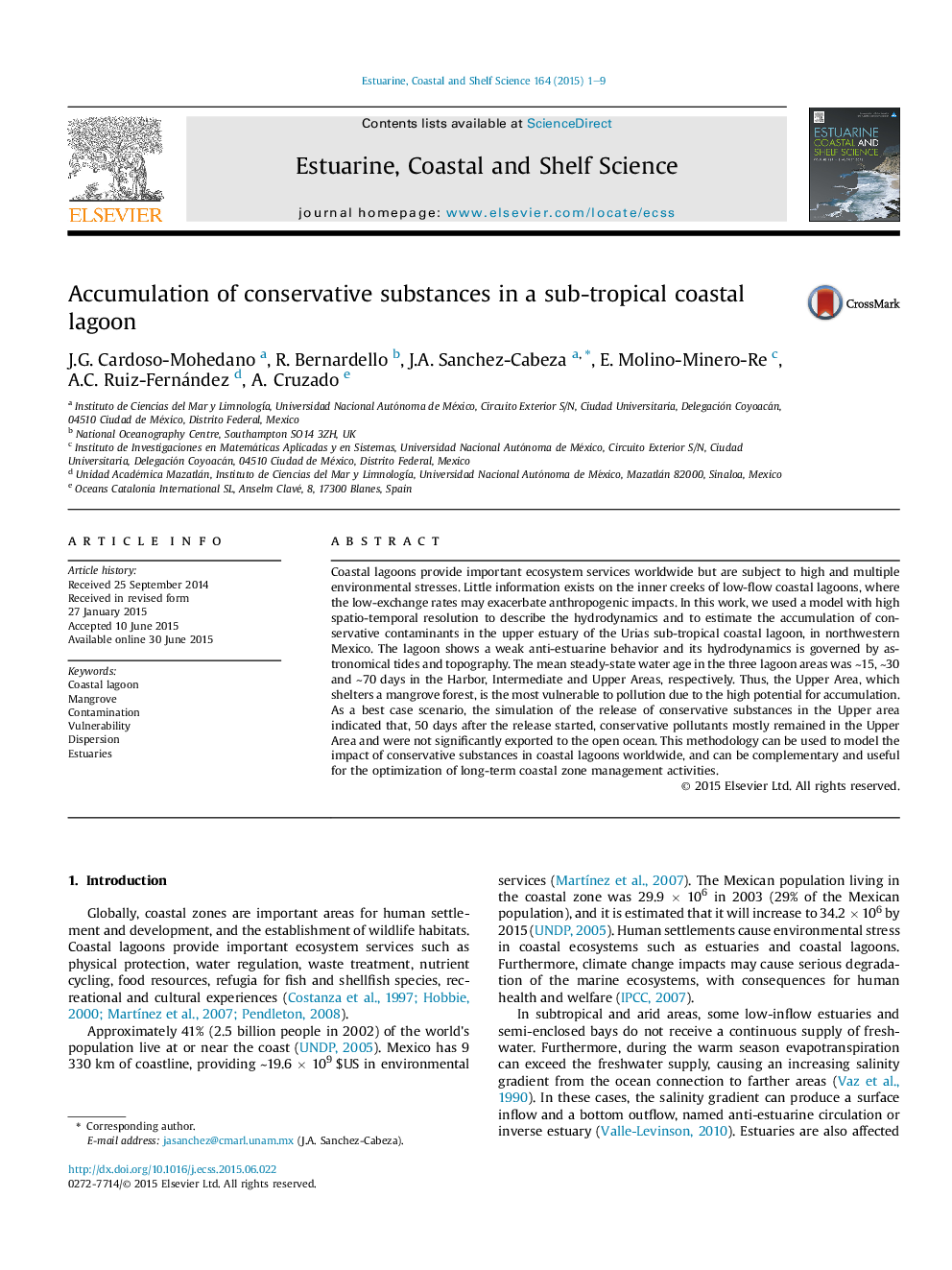| Article ID | Journal | Published Year | Pages | File Type |
|---|---|---|---|---|
| 6384659 | Estuarine, Coastal and Shelf Science | 2015 | 9 Pages |
Abstract
Coastal lagoons provide important ecosystem services worldwide but are subject to high and multiple environmental stresses. Little information exists on the inner creeks of low-flow coastal lagoons, where the low-exchange rates may exacerbate anthropogenic impacts. In this work, we used a model with high spatio-temporal resolution to describe the hydrodynamics and to estimate the accumulation of conservative contaminants in the upper estuary of the Urias sub-tropical coastal lagoon, in northwestern Mexico. The lagoon shows a weak anti-estuarine behavior and its hydrodynamics is governed by astronomical tides and topography. The mean steady-state water age in the three lagoon areas was â¼15, â¼30 and â¼70 days in the Harbor, Intermediate and Upper Areas, respectively. Thus, the Upper Area, which shelters a mangrove forest, is the most vulnerable to pollution due to the high potential for accumulation. As a best case scenario, the simulation of the release of conservative substances in the Upper area indicated that, 50 days after the release started, conservative pollutants mostly remained in the Upper Area and were not significantly exported to the open ocean. This methodology can be used to model the impact of conservative substances in coastal lagoons worldwide, and can be complementary and useful for the optimization of long-term coastal zone management activities.
Related Topics
Physical Sciences and Engineering
Earth and Planetary Sciences
Geology
Authors
J.G. Cardoso-Mohedano, R. Bernardello, J.A. Sanchez-Cabeza, E. Molino-Minero-Re, A.C. Ruiz-Fernández, A. Cruzado,
